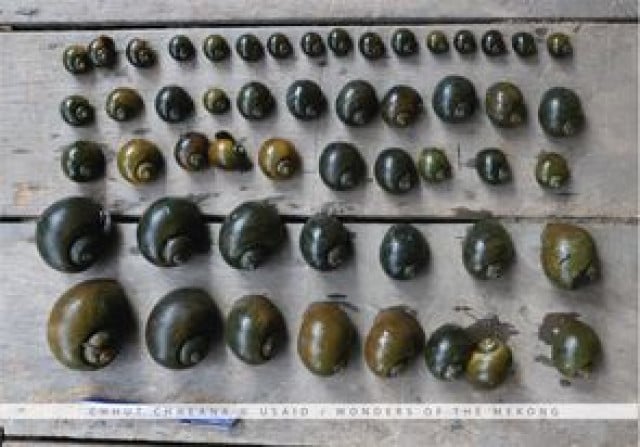Mollusc Diversity in Tonle Sap Lake

- USAID Wonders of the Mekong
- May 9, 2021 9:33 AM
Scientists working with the Wonders of the Mekong project recently undertook an ambitious initiative to catalogue the overlooked mollusc diversity in Cambodia’s Tonle Sap Lake, which was previously based on records from the late 1800s and early 1900s. Their new report provides a much-needed update on mollusc diversity in the region and highlights the need for more research on these important organisms.
Surveys in the Tonle Sap detected at least 15 species of bivalves and 16 species of gastropods, including three species that had never before been recorded in Cambodia. The team also deposited specimens at three different natural history museums to begin the first freshwater mollusc collections in the region.
Tonle Sap Lake contains many economically important mollusc species that people harvest for food and income, including apple snails and Asian clams. The economic benefits of these species may be threatened by recently introduced invasive molluscs, such as American apple snails, which highlights the importance of research on these understudied species.
The new species checklist for the Tonle Sap is a critical first step to guide future research and improve understanding of Cambodia’s ecologically and economically important mollusc diversity. Read more about the study here
Please share this post to learn more about the incredible diversity of life in the Mekong Basin, and to help others learn about Cambodia’s important molluscs!















